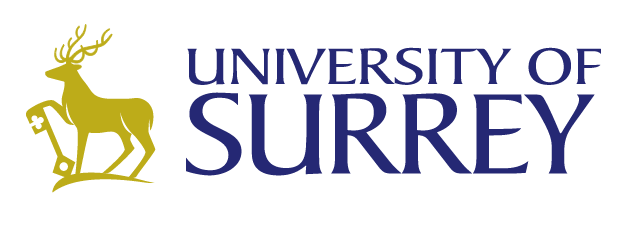SAN JUAN COLORADO MIXTEC
- Facts
- Sources of the data
- Orthography
- Verbal inflection
- Inflectional classes by affixation
- Stem alternation patterns
Facts
San Juan Colorado Mixtec is a Mixtecan language spoken in the district of Jamiltepec in the state of Oaxaca, Mexico, by about 6,000 people.
Sources of the data
Stark, Sara C., Andrea Johnson P., Filiberto Lorenzo Cruz, Catalina López de García, and Daniel Fidencio García Alavez. 1986. Diccionario Mixteco de San Juan Colorado. Serie de Vocabularios y Diccionarios Indígenas “Mario Silva y Aceves", nº 29. Mexico City: Instituto Lingüístico de Verano. Available online.
Enrique L. Palancar, Jonathan Amith, Rey Castillo García. Verbal inflection in Yoloxóchitl Mixtec. Accepted in Enrique L. Palancar & Jean-Léo Léonard (eds.), Tone and Inflection: New facts under new perspectives. Submitted to DeGruyter. Available online.
Orthography
We have respected much of the orthography used in the sources, except for a couple of instances:
| IPA notation | Source notation | Our notation |
|---|---|---|
| Nasality | Vn | – |
| Rearticulation | VV | – |
| ʔ | h | ʔ |
| ʃ | x | – |
| j | y | – |
| ɲ | ñ | – |
| k | c/_u,o,a | k |
| qu/_i,e | ||
| tj | ty | – |
| ntj | ny | nty |
| b | v | b |
Tones
San Juan Colorado Mixtec has three level tones. To facilitate comparison we have converted the orthography of the original, which uses diacritics, to numbers: 1 (low), 2 (mid) and 3 (high). Like in other Mixtec languages, tonal word phonology is organized in melodies. Bimoraic words have the following melodies.
| /3-3/ | sɨ³vɨ³ | ‘name’ |
| /3-2/ | lu³hlu² | ‘small’ |
| /2-3/ | ndɨ²bɨ³ | ‘hen’ |
| /2-2/ | be²ʔe² | ‘house’ |
| /2-1/ | i²na¹ | ‘dog’ |
| /1-2/ | tya¹ka² | ‘fish’ |
| /1-1/ | ko¹o¹ | ‘snake’ |
Verbal inflection
Like a typical Mixtec language, verb stems in San Juan Colorado Mixtec are most commonly bimoraic, but also trimoraic. There are three aspect-moods: the irrealis (called ‘future’), the completive (sometimes called ‘past’) and the incompletive (called ‘present’).
| IRR | CPL | INCPL | Example |
|---|---|---|---|
| ka²xin² | tya²xin² | tya³xin³ | ‘suckle’ |
Tone plays a fundamental role in the realization of such forms. The tonal melody of the CPL could be taken as being lexical, and for most verbs, the IRR does not change tone (although there are exceptions dividing the verbs into tone classes). However, the INCPL differs from the CPL (except for some irregular verbs) and the way it is built can be complex. For details, see a first approach attained in Palancar, Amith and García (forthcoming), which is available online. For convenience, tone structure has been given in the database to aid possible future analyses.
Inflectional classes by affixation.
Most verbs are segmentally invariable, which in most cases means that their IRR form and their CPL form is homophonous.
| IRR | CPL | INCPL | Example |
|---|---|---|---|
| ta¹tsi¹ | ta¹tsi¹ | ta³tsi³ | ‘sow’ |
A small number of verbs select different sets of prefixes. These classes are annotated by listing the prefixes they take.
| Class | IRR | CPL | INCPL | Example |
|---|---|---|---|---|
| I | ka²ba² | tsi¹-ka¹ba¹ | tsi²-ka³ba² | ‘go to bed’ |
| II | ku²-ndi²tsi² | tsi²-ndi²tsi² | ndi³tsi³ | ‘dress’ |
| III | ku¹-nuʔ²u² | tsi¹-nuʔ²u² | kw-a²nuʔ³u³ | ‘go’ |
Stem alternation patterns
Most non-invariable verbs have a stem change in the irrealis with a mutated first syllable; there are two main classes, ku+ or ka+, and a minor one, ba+.
| Class | LEX STEM | IRR STEM | |
|---|---|---|---|
| ku+ | nda¹tu¹ | kw+a¹tu¹ | ‘wait’ |
| tsi¹ña¹ | ku+(i)¹ña¹ | ‘breed (animal)’ | |
| ka+ | tya²sɨ¹ | ka+²sɨ¹ | ‘close’ |
| tsa²nɨ¹ | ka+²nɨ¹ | ‘destroy’ | |
| ba+ | tsa¹ku¹ | ba+¹ku¹ | ‘mourn’ |
| tsi²kun² | b+i²kun² | ‘get stuck’ |
More research and first hand data is needed to understand how these classes work and how different they are from similar (cognate) classes found in other Mixtec languages.






